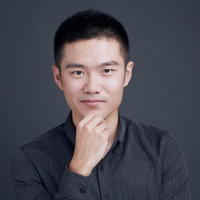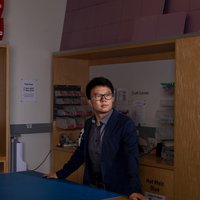As the fundamental solution for broad-spectrum
applications in smart cities, virtual and augmented realities, robotics, smart
imaging has always been attractive to both academia and industry, yet full of
challenges. Dr. Lu Fang devoted herself to this frontier area and launched
theoretical and technical researches.
Single sensor imaging has limited performance in
acquiring multi-dimensional images containing spatial, temporal, angular,
spectral, and dynamic information. Parallel sampling and processing in array
cameras may enable 10-100X increases in pixel capacity. The existing array
cameras comprise multiple homogeneous microcameras arranged in a highly
structured way. Such a uniform pixel density is a legacy concept from single
aperture cameras. Dr. Lu Fang proposed UnstructuredCam, an unstructured
heterogeneous array camera that enables scalable and smart sampling. By using wide
angle microcameras to capture the panoramic scene along with telephoto
microcameras for local dynamic details, the UnstructuredCam follows the user's perspective of natural gigapixel scale systems while minimizing the system
cost, the operating power, and the storage and processing costs. Furthermore,
her team proposed Multiscale-VR, a multiscale unstructured array camera for
high-quality gigapixel 3D panoramic videography, creating 6DoF multiscale
interactive VR content.
With the emergence
of new generations of computational imaging systems and AI technologies, bridging
the gap between computational photography and computer vision has come into great demand. Dr. Lu Fang proposed a novel Gigapixel-level
Human-centric Video Dataset (PANDA) to support large-scale, long-term, and
multi-object visual analysis. The videos contain 4k head counts with over 100×
scale variation, equipped with enriched ground-truth annotations. PANDA helps to
understand the complicated behaviors and interactions of crowds in large-scale
real-world scenes.
High
dimensional visual data acquisition, reconstruction, and processing require more
and more computational resources due to the significant increase of data size
and model complexity. Combining optical computing with electronic computing
can fundamentally accelerate the model iteration speed. At the intersection of
computer vision and graphics, scientific computing, machine learning, optics, and electronics, Dr. Lu Fang will adopt the interdisciplinary research
principle and focus on the development of cutting-edge smart imaging systems
and high-performance optoelectronic computing platforms.
Although optoelectronic computing suffers from various limitations before working with smart imaging, she is full of confidence. "We look forward to the realization of a new
generation of smart cameras in the near future, which can not only serve smart
cities, but also build a new generation of vision radar to serve autonomous
driving and unmanned systems," she said.




